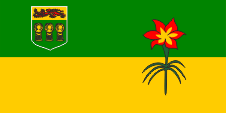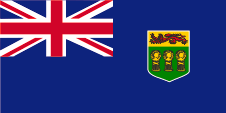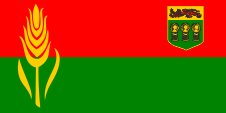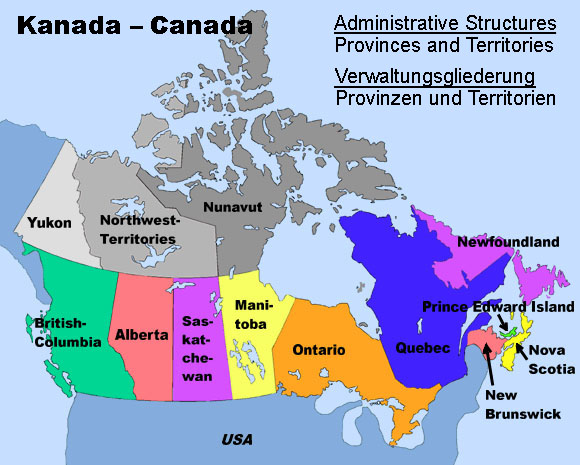mobile View, to the German Version tap the flag


• Flag
• Historical Flags
• Meaning/Origin of the Flag
• Coat of Arms
• Meaning/Origin of the Coat of Arms
• Map
• Numbers and Facts
• History
• Origin of the Country's Name

Flag of the Province of Saskatchewan,
ratio = 1:2,
Source: Corel Draw 4







1906–1965,
Flag of the government (state flag),
ratio = 1:2,
Source, by:
World Statesmen




1965–1967,
Flag of the province,
ratio = 1:2,
Source, by:
World Statesmen




The today's flag of Saskatchewan was adopet on 22nd of September in 1969. It shows in two horizontal stripes the colours green and yellow. Near the pole is positioned in the green stripe the blazon of Saskatchewan, in the flying end in the middle of the flag a red flower. The colours are borrowed from the coat of arms of the province. Yellow stands for the wheat fields and green for the woods. Until the year 1922 there had officially been used, the British Union Jack, the so-called Royal Union Flag, by the departments of the provinces, or (from 1922 nearly only) the Canadian blue official flag, the typical British Blue Ensign, with the coat of arms of Canada in the flying end. Nevertheless, the provincial authorities had their own seals and later also coats of arms, which were unauthorized placed in the flying end of the blue official flag. A permit should have been approved by the British authorities for this procedure, this was not the case, but was tolerated. Private individuals had to use the Union Jack and from 1892 the so-called Red Ensign, the red version of the Canadian flag with the Union Jack in the upper corner and the coat of arms of Canada in the flying end. In the course of the gradual separation of Canada from the United Kingdom the Blue Ensign as an official British flag lost its meaning and became replaced by new provincial flags, which may be used by authorities and departments of the provinces and also by private individuals. In this way, Saskatchewan introduced a new flag in 1965. It showed two horizontal stripes in red and green, the coat of arms at the top in the flying end of the red stripe and at the flagpole a stylized grain ear. It was replaced in 1967 by the today's model.
Source:
Flaggen Enzyklopädie,
World Statesmen


since 1906,
Escutcheon of Saskatchewan,
Source, by:
Corel Draw 4

There is a regular coat of arms for Saskatchewan, with a console, shield holders (supporters), withe a crest and the motto. Here is only depicted the central part of the coat of arms, the escutcheon. The escutcheon of Saskatchewan shows in the upper part a red British lion on gold. The lower part of the blazon is green with three grain sheafs on it.
Source:
Volker Preuß


Map:
Volker Preuß

Area: 222.803 square miles
Inhabitants: 1.132.505 (2016)
Density of Population: 2 inh./sq.mi.
Capital: Regina, 215.100 inh. (2016)
official Language: English
other Languages: German, French
Currency: Canadian currency
Time Zone: GMT – 6 h to – 7 h
Source:
Wikipedia (D)

ca. 30.000 years B.C. · first settlement by natives
ca. 8.000 years B.C. · settlement by Indian tribes of the Assiniboine, Blackfoot and Cree
17. Jhd. · French and English fur traders range through the today's Saskatchewan
1670 · the today's Saskatchewan gets purchased as Rupertsland by the Hudson's Bay Company
1869 · the Hudson's Bay Company (HBC) cedes all its territorial rights and prerogatives to the British Dominion of Canada
1870 · formation of the Northwest Territories from the former properties of the HBC (Rupertsland and Northwestern Territories)
1882 · establishment of Saskatchewan as a District of the Northwest Territories (capital Battleford)
1883 · establishment of the Territories Alberta, Athabaska, Saskatchewan and Assiniboia by dividing off the Northwest Territories
1905 · Saskatchewan gets enlarged by annexion of Assiniboia and parts of Athabaska and joines as province into the Dominion of Canada, capital becomes Regina (former capital of Assiniboia)
Source:
Atlas zur Geschichte,
World Statesmen,
Wikipedia (D),
Discovery '97

The name of the province goes back to the Saskatchewan River. The Cree Indians call it kisiskāchiwani-sīpiy, which is to translate as "fast flowing river".
Source:
Wikipedia (D)


![]()












